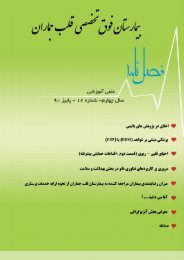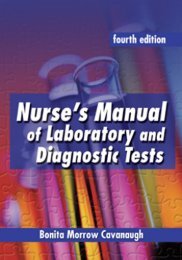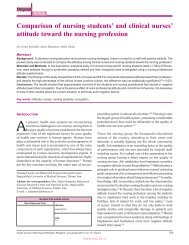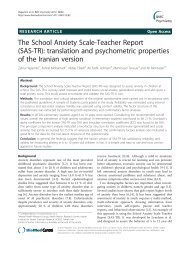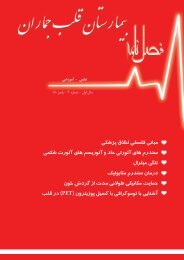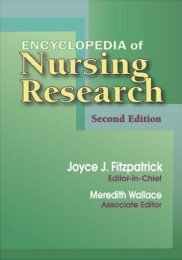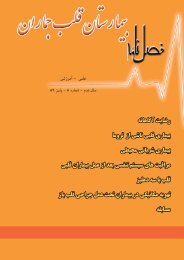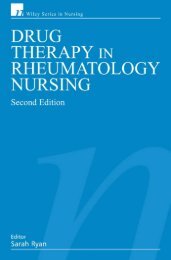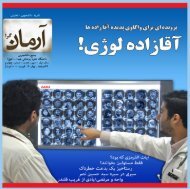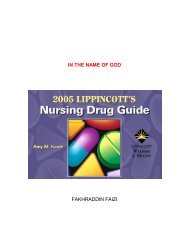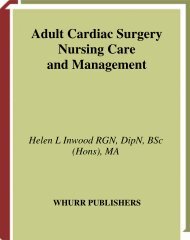Gastrointestinal Nursing.pdf
Gastrointestinal Nursing.pdf
Gastrointestinal Nursing.pdf
Create successful ePaper yourself
Turn your PDF publications into a flip-book with our unique Google optimized e-Paper software.
98 Chapter 6due to dysfunction of the intestine and are therefore described as functional,as their occurrence cannot be explained by any underlying biochemicalor structural abnormality. Other functional disorders of the GI tract includefunctional abdominal pain, functional abdominal bloating/distension andfunctional constipation.Classical IBS is a chronic condition characterised by a range of symptomsincluding abdominal pain and altered bowel function. Pain may occuranywhere in the abdomen but is most typical in the lower abdomen. Boweldisturbances are classically described as alternating between constipationand diarrhoea, although two-thirds of patients have a predominant pattern ofconstipation or diarrhoea.Patients with IBS commonly report a wide variety of non-colonic symptomssuch as dyspepsia, backache and gynaecological and urinary symptoms. Tirednessand lethargy are also very common.Diagnosis of IBSThe symptoms of IBS may be chronic or recurrent and can vary betweenpatients in nature and severity. Diagnosis must be based on the presence ofkey symptoms and IBS is diagnosed positively on the basis of symptom criteriaand the exclusion of organic GI illnesses. Symptom-based diagnostic criteriahave been used to define IBS for some time, initially the Manning criteria inthe 1970s followed by Rome I criteria in 1992. The most recent criteria are theRome II guidelines, which are summarised in Box 6.1.IBS can affect many aspects of an individual’s life – work, leisure, travel andrelationships – and these effects have a detrimental effect upon the patient’shealth-related quality of life.Aetiology of IBSThere is no universal agreement about the aetiology of IBS; it has been speculatedthat trigger factors could include stress, lifestyle, candida, prolonged useof antibiotics, post-gastroenteritis, emotional trauma or a combination of thesefactors.Box 6.1Rome II criteria for diagnosing IBS.These criteria state that, within the preceding 12 months there should be at least 12consecutive weeks of abdominal discomfort or pain that has two of the following threefeatures:relieved with defecation; and/or•onset associated with a change in frequency of stool; and/oronset associated with a change in form of stool.




